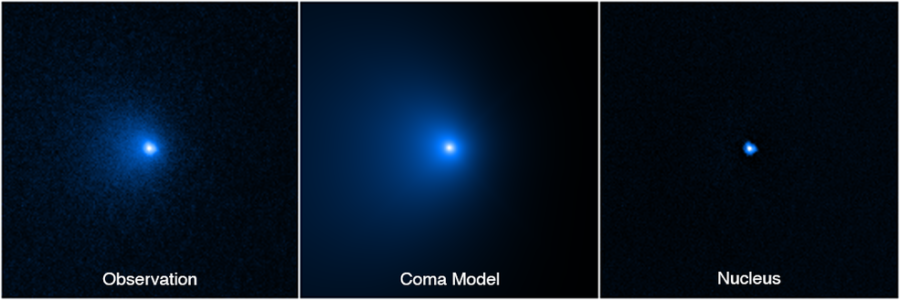Hubble telescope records largest comet nucleus ever seen

According to NASA, Comet C/2014 UN271 is the largest comet nucleus on record. With an estimated diameter of 137km, it’s larger than the ACT and about 50 times larger than typical comets. It weighs in at an astounding 450 trillion tonnes (approximately), which is 100,000 times greater than the mass of a typical comet found closer to the Sun.
The incandescent blue glow of this leviathan was spotted by astronomers Pedro Bernardinelli and Gary Bernstein in archival images at the Cerro Tololo Inter-American Observatory in Chile.
First observed in 2010, it’s barrelling our way at 35,400 kilometres per hour from the edge of the solar system. But there’s no need to fret; NASA says it won’t ever get closer than 1.6 billion kilometres away from the Sun, and not until 2031.
“This is an amazing object, given how active it is when it’s still so far from the Sun,” said the lead author of a new study into the comet in The Astrophysical Journal Letters, Man-To Hui of the Macau University of Science and Technology, Taipa, Macau. “We guessed the comet might be pretty big, but we needed the best data to confirm this.”
His team used Hubble to take five photos of the comet on 8 January 2022.
While the comet is currently too far away for its nucleus to be distinguishable by Hubble, the data did reveal a bright spike of light at the nucleus’ location. Dr Hui and his team created a computer model of the surrounding coma and adjusted it to fit the Hubble images. Then, they subtracted the glow of the coma, exposing its starlike nucleus.

“This comet is literally the tip of the iceberg for many thousands of comets that are too faint to see in the more distant parts of the solar system,” said study co-author, David Jewitt, a professor of planetary science and astronomy at the University of California, Los Angeles (UCLA), “We’ve always suspected this comet had to be big because it is so bright at such a large distance. Now we confirm it is.
“It’s big and it’s blacker than coal.”

